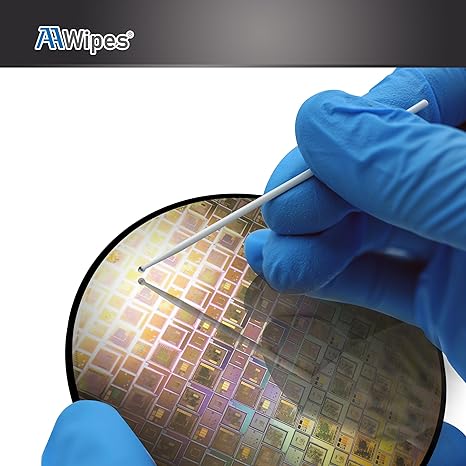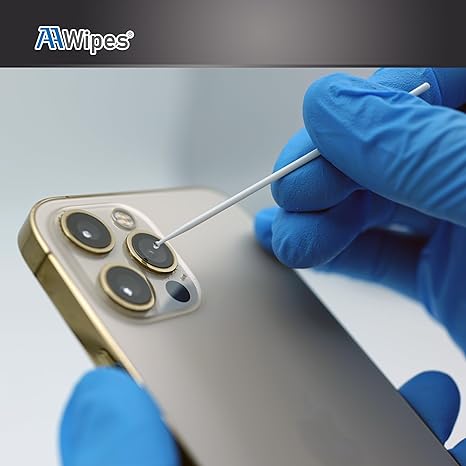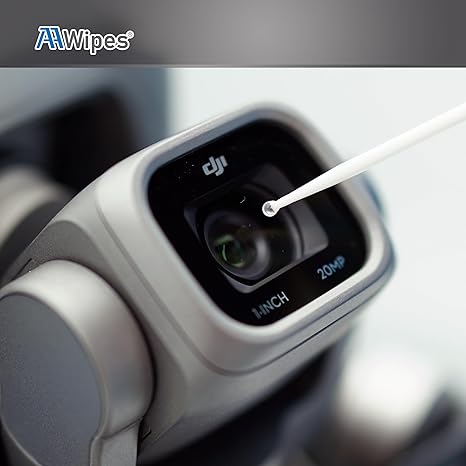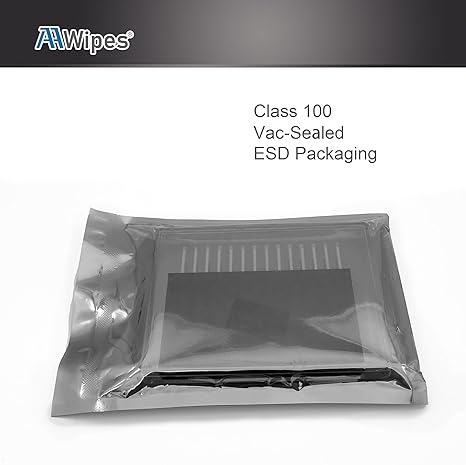Description
Gel Sticky Pen Swabs – Precision Cleaning for Sensitive Electronics
Our Gel Sticky Pen Swabs feature a transparent silicone gel head with high viscosity, designed to effectively remove dust, oils, and contaminants from delicate electronics and optical equipment without causing damage. The flexible ABS rod ensures a secure, ergonomic grip for precise cleaning.
Key Features:
-
Precision Cleaning: Removes dust, fingerprints, and oils from hard-to-reach areas and sensitive surfaces like LCD/LED screens, camera sensors, and wafer parts.
-
ESD Safe: Non-ionic, antistatic agent for safe use on electronic components and cleanrooms.
-
Low Residue: Minimal particle generation, ideal for cleanrooms (ISO Class 10-5000).
-
Reusable: Each swab can be used up to 60 times, offering long-lasting value.
Applications:
-
Electronics & Semiconductors: Clean LED/LCD screens, camera sensors, and hard drives.
-
Optical Equipment: Clean optical lenses, microscope mirrors, and glass surfaces.
-
Cleanrooms & Sensitive Environments: Essential for biotech, pharmaceuticals, and aerospace industries.
-
Small Electronics & Repair: Perfect for cleaning smartphones, cameras, and precision devices.
Packaging & Use:
-
Contents: 200 swabs, each measuring 7.5 cm (2.95 inches) with a 2.5 mm (0.1 inches) head.
-
Directions: Press the sticky end onto the target area and gently lift to remove contaminants. Reuse up to 60 times before replacing.
Why Choose Our Gel Sticky Pen Swabs?
Our swabs provide high viscosity, ESD protection, and durability, making them ideal for industries requiring precision cleaning. Perfect for small businesses, medium-to-large enterprises, and high-volume users in electronics, optical, medical, and aerospace fields.
Want to become an AAWipes distributor or unlock exclusive wholesale discounts? Apply now!
👉 Distributor Application Form
Curious about our quality? Request a free sample today and experience it firsthand!
Certification Download:
👉 SDS
FAQ – Gel Sticky Pen
-
What is the Gel Sticky Pen made of?
A transparent, adhesive silicone head with high viscosity, securely attached to an ABS rod. It’s designed for safe cleaning without damage. -
What are the key benefits?
-
High viscosity: Cleans without scratches or stains.
-
ESD Safe: Protects sensitive electronics.
-
Low residue: Ideal for cleanroom environments.
-
Reusable: Up to 60 uses.
-
-
What is it used for?
-
Electronics: Wafer parts, LED/LCD screens, camera sensors, HDDs.
-
Optical equipment: Lenses, microscopes, mirrors.
-
Small, hard-to-reach areas in cleanrooms.
-
-
How do I use it?
Press the sticky end on the surface, lift to remove contaminants. Reuse up to 60 times. -
How is it packaged?
200 swabs per box, each 7.5 cm long with a 2.5 mm head, individually sealed in a dust-free box. -
Can I use solvents with it?
Yes, it works with solvents like isopropyl alcohol to safely dissipate static. -
How long can I reuse it?
Up to 60 times, after which it may lose effectiveness. -
Is it safe for all electronics?
Yes, its soft silicone head and ESD control make it safe for sensitive devices. -
How should I store it?
Store in the dust-free box to keep it clean and maintain its effectiveness.
You may also like
Recently viewed
-
5(4)
-
4(2)
-
3(1)
-
2(0)
-
1(0)
My camera sensor had a particle that would not yield to a blower, a "dust it Platinum stick", AND a wet swab wiping. So, I got these gel sticks. After practicing on some lens glass, I found the stick leaves no residue (well, that may be impossible, but you get the idea, no residue to worry about). I tried dabbing the stick on the particle, two dabbings removed the stubborn particle. I leave others to speculate as to why this stick worked and the "dust it Platinum" did not. What a relief!
These work great for removing dust and particles from watch movements and dials. Easy clean up with water and ready for many reuses.
Economical, easy to use swabs that safely remove dust and other accumulated particulates from lens, mirrors, etc.
I have a Sony A7RIV and I'm not afraid to change lenses in the mountains or beach. This means my sensor collects dust/debris. I like to use this first to remove the debris I can easily see using a magnifying glass. I hold the magnifying glass in my left hand and the gel stick in my right and lightly tap on the dust and it comes off. I then only need one wet sensor swab to finish cleaning the sensor. If you change lenses outside in all conditions then I think this is a good product. For wh…at its worth blowers only blow dust around inside your camera that eventually lands back on your sensor.
If you have a DSLR then you have to clean the sensor and lenses-no way out of that. These work very well but they are a bit overpriced for what you get. However, they are handy and small so that is a plus. In a nutshell, it all depends on your needs and budget. If you are on the go and want to travel as lightly as possible, then check these out. They are nice to have on hand because dust can crop up anytime and can ruin your photos and equipment.
I'm not a huge fan of having to touch my camera's sensor, I'm always afraid of damage. But this work well actually. If you have some hard to removed specks of dust, that say a blower bulb can't seem to blow off or the static brush won't grab, these will get it. You need very very little pressure and there is no residue left behind. Good to keep in your cleaning kit.
I got this to clean the sensor of my mirrorless camera. I have had the camera over two years and was noticing significant spots.What I found is these sticks are ok for removing large spots you can see with just my eyes or reading glasses. However, I've found that most spots on sensors are so small that it just won't be possible to remove them, because they are too small to be seen. For these a wet sensor swab is still the best remedy.Here is my workflow:First, be careful cleaning your camera's… sensor. Particularly with mirrorless cameras that have in-body stabilization, you can damage that mechanism causing a costly repair.Second, hold the camera with the sensor facing down if possible. You don't want to put more dust into the sensor by holding it facing up.1. Take a reference photo of an out-of-focus white area, at a high f/stop like f/22. Blow it up on your computer monitor. Dust spots will appear as grey circles.2. Blow off the sensor with a blower specifically designed for camera sensor cleaning.3. Repeat step 1. If the sensor is still dirty, proceed to the next step.4. Blow the sensor on a clean, soft brush designed for sensors. Blowing charges the brush with static, and specks of dust will transfer from the sensor to the brush. Brush off the sensor.5. Repeat step 1. If the sensor is still dirty, proceed to the next step.6. If there are spots you can see with reading glasses or just your eyes, use these gel sticks to remove them.7. Repeat step 1. If the sensor is still dirty, proceed to the next step.8. If you are comfortable wet-cleaning the sensor, follow the instructions in the kit you bought to wet clean. You may have to do this two or more times, with reference photos between, before all of the spots are gone.In the end, these gel sticks are one tool of several you should have for keeping your camera sensor clean. They won't work all by themselves, but they can be helpful.










